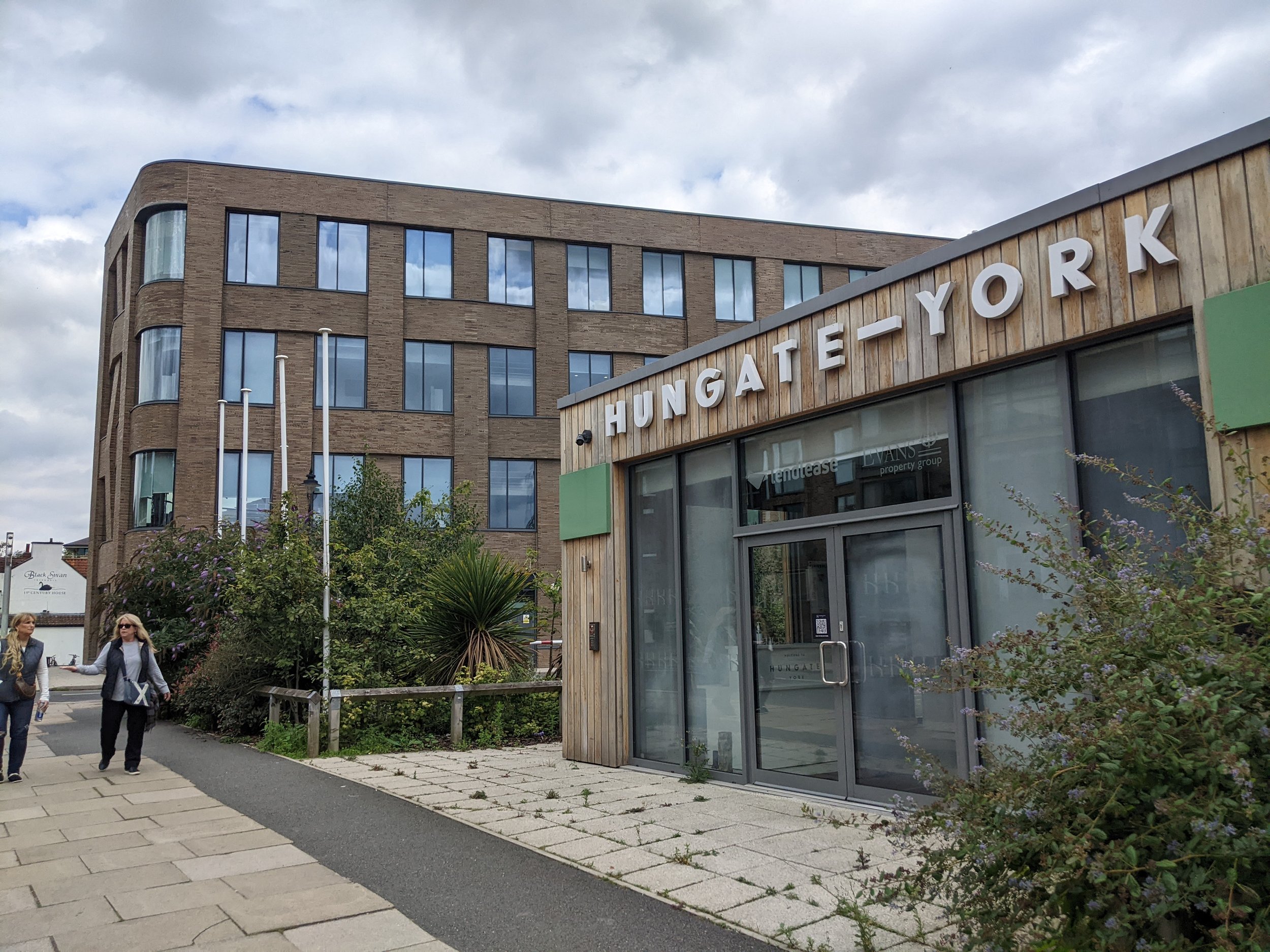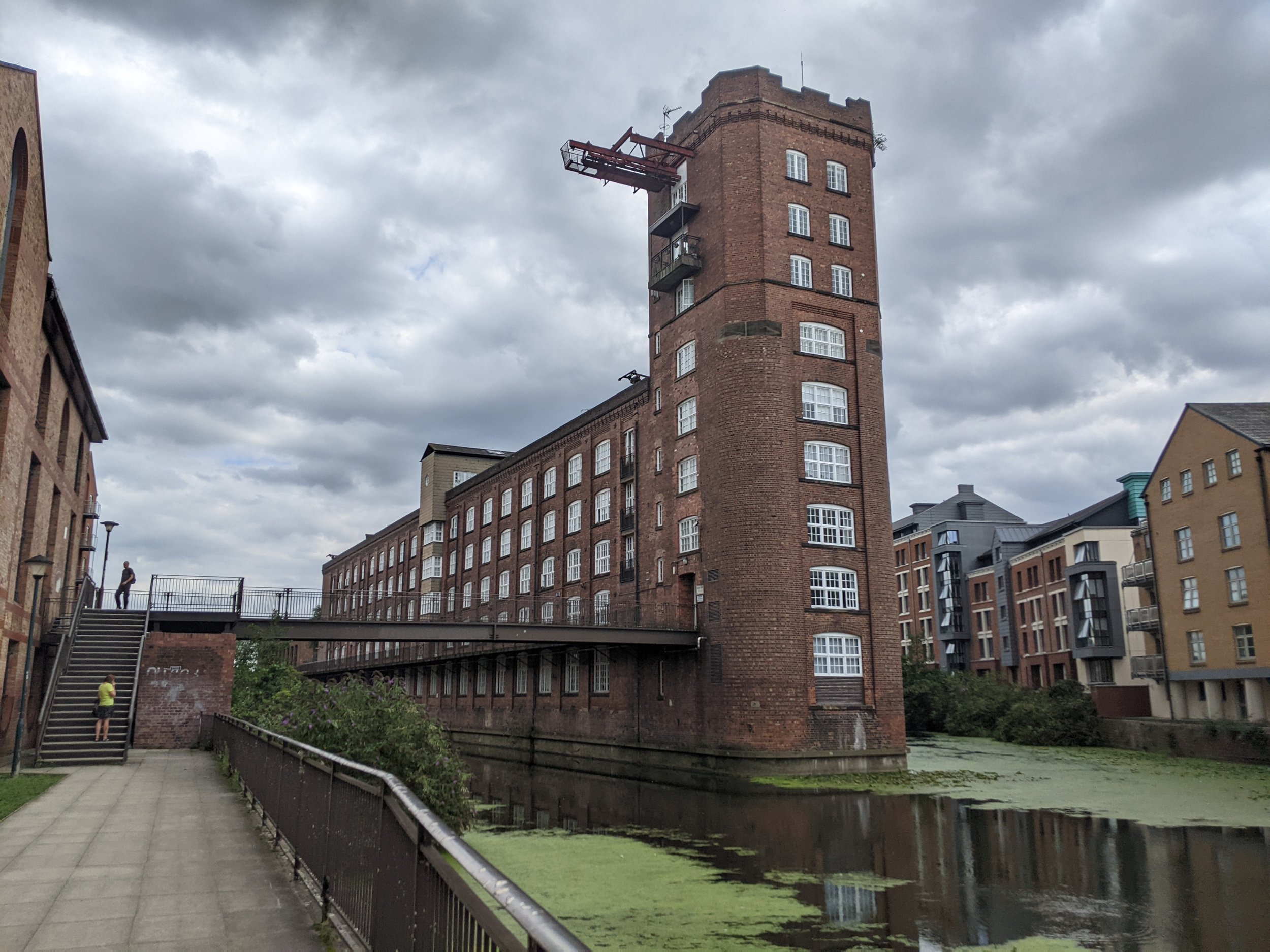Hungate & Walmgate:
Architecture & Health in York
Directions to the Hiscox Building
Up until the 20th century, behind the genteel, historic character of York’s main streets lay a teeming mass of slum dwellings, home to the large part of the population who was living in poverty. Benjamin Seebohm Rowntree’s report into York’s poor was published in 1901, and he used the meticulous evidence in it to influence the reforming politics of the pre-war Liberal party. His researchers visited more than 11,500 families and concluded that a quarter of the city population was visibly poor showing ‘obvious want and squalor’. He linked slum housing and ill health with poverty and showed that the poorest children were shorter and lighter than their peers from the better-off working classes. The York Corporation began to take action. In 1908 the medical officer Edmund M Smith produced a report condemning whole streets in Hungate as unfit for habitation, repeating the exercise for Walmgate in 1914. York Corporation used new powers under the Housing Act of 1930 to begin slum clearance, and the residents moved to new council homes built outside the city centre. By the mid-Thirties, the corporation housed one seventh of the city’s population in more than 3,000 homes in estates like Tang Hall and Heworth Grange. Better housing and sanitation combined with medical advances and the development of the NHS and its local assemblage helped to improve the city’s health. In 1956 infant mortality fell to 16.2 per 1,000, the first time the figure had fallen below 20. A place to talk about the connection between architecture, health services, and public health.
Listen to the podcast below to find out more
Nik Brown is Head of Department and Professor in the Department of Sociology at the University of York. His research is primarily focussed on biopolitics of the biosciences in the contexts of the sociology of immunity, the legal regulation of biotechnology, transplantation and xenotransplantation, the politics of embryo research and trans-species embryos, blood stem cell banks and umbilical cord blood banking, infections, antibiotics, antimicrobial resistance, healthcare architectures and infection control. He has received funding from the Economic and Social Research Council, the European Commission, the Arts and Humanities Research Council, the Wellcome Trust Centre for Future Health, the Medical Research Council, and the Swedish Pufendorf Institute for Advanced Studies. He has published widely on the biopolitics of immunity including Immunitary Life: The biopolitics of Immunity.





